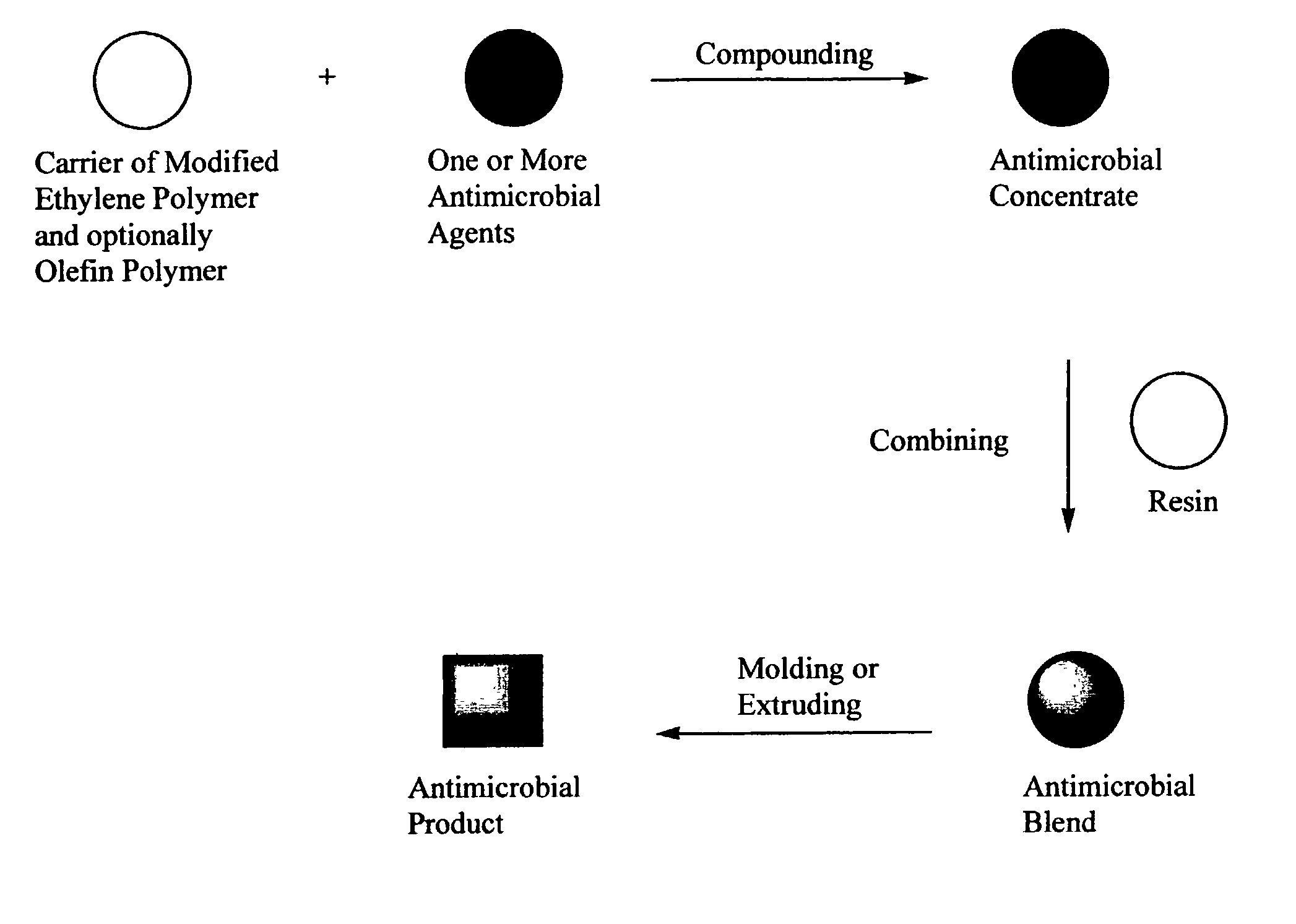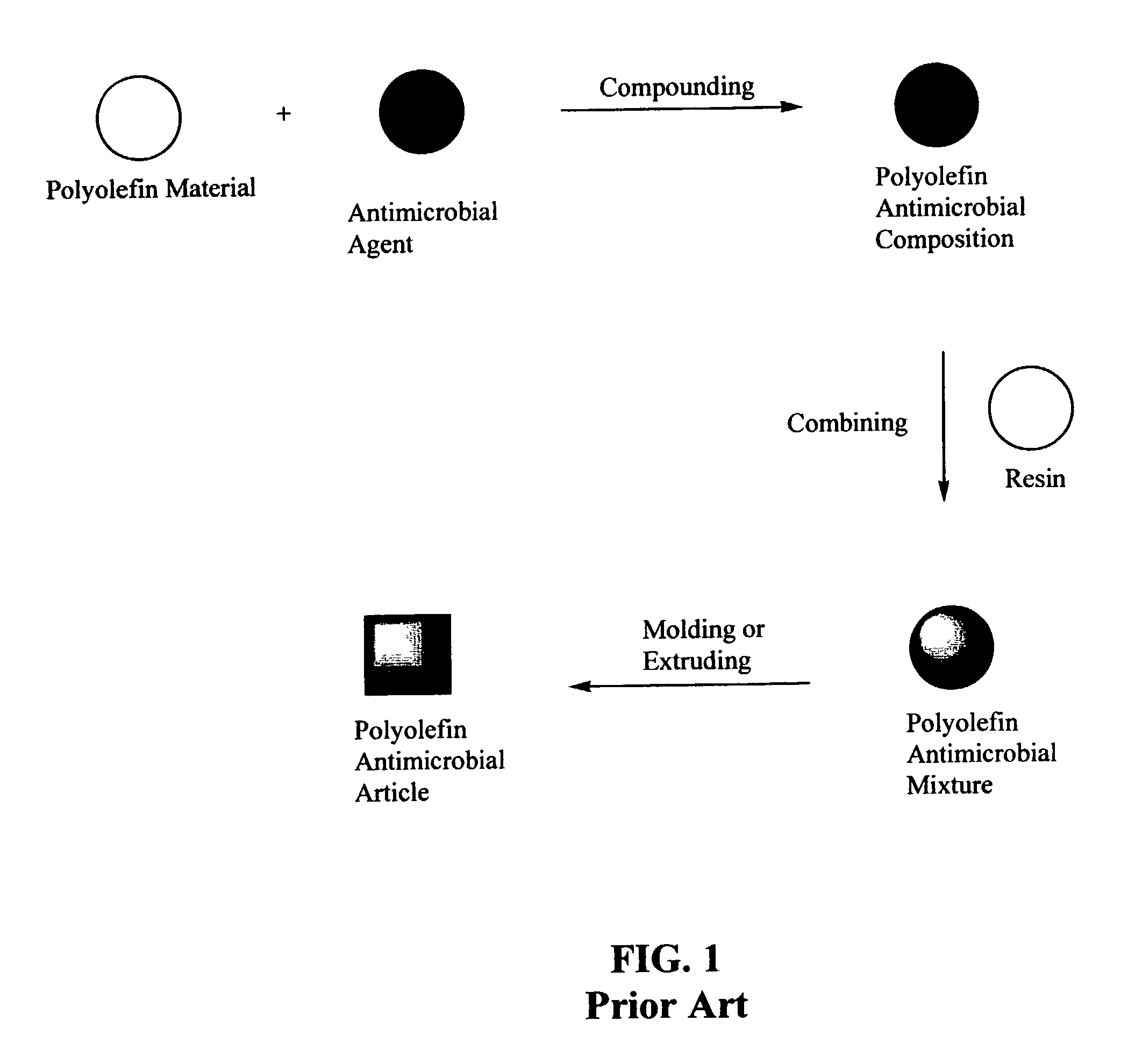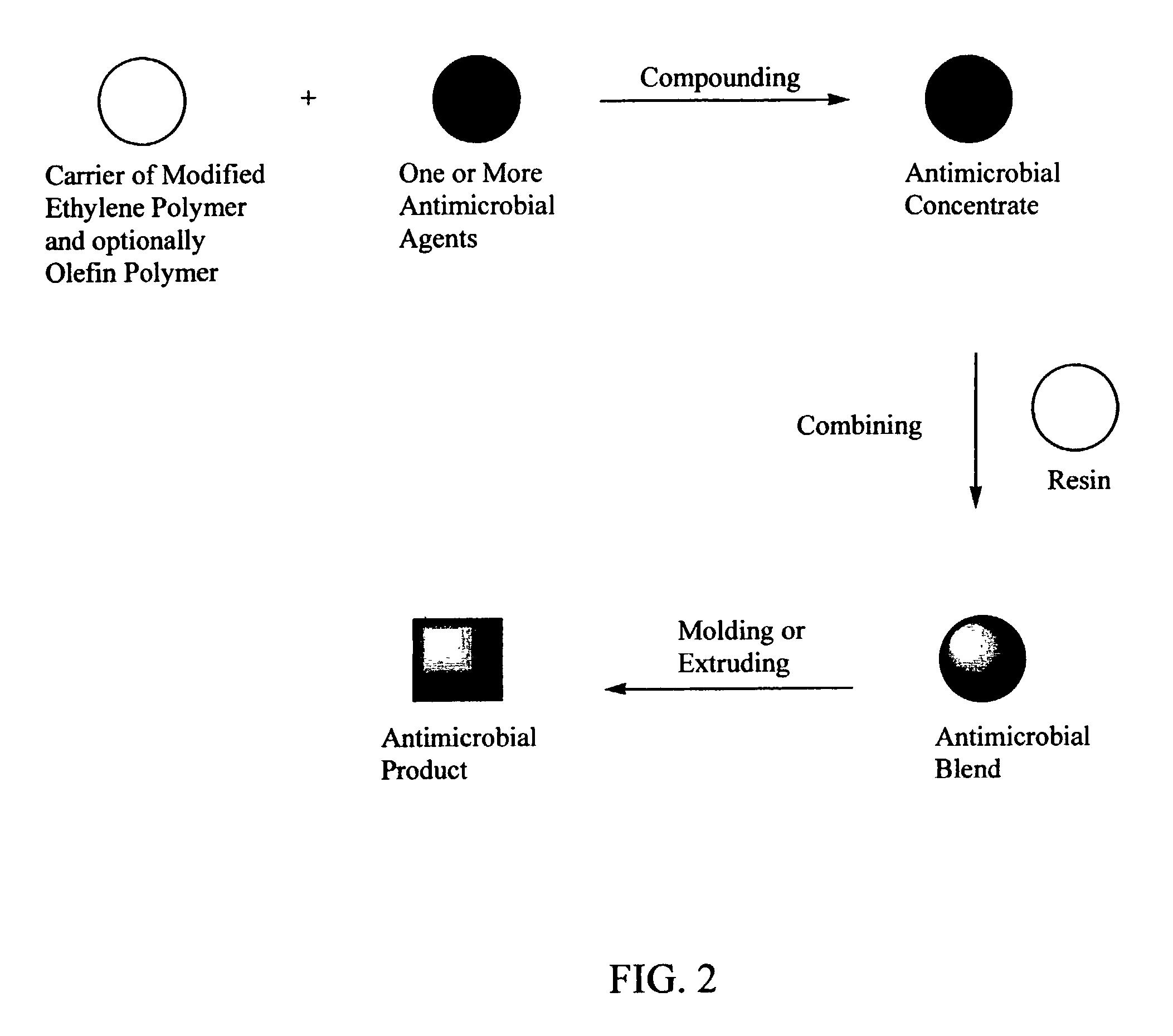Antimicrobial concentrates
a technology of antimicrobial agents and concentrates, which is applied in the field of antimicrobial polymer concentrates, can solve the problems of low compatibility of antimicrobial agents with the substrate of materials, and clumping of composition pellets during processing, so as to achieve enhanced antimicrobial agent solubility, high compatibility, and high affinity
- Summary
- Abstract
- Description
- Claims
- Application Information
AI Technical Summary
Benefits of technology
Problems solved by technology
Method used
Image
Examples
example 1
[0044]To illustrate the reduction of chalking and clumping of the concentrate of the present invention, as opposed to the heavy chalking and clumping associated with the polyolefin antimicrobial composition, four samples were analyzed using ultraviolet spectrometry to determine the relative amount of antimicrobial agent accumulated on the respective surface thereof. The amount of antimicrobial present on the surface of the sample being analyzed correlates to the amount of chalking and clumping associated with that particular sample. More specifically, a high concentration of antimicrobial agent present on the surface of the sample correlates to a higher degree of chalking and clumping associated with that particular sample. Ultraviolet spectrometry was carried out utilizing a high performance liquid chromatograph (HPLC).
[0045]The method of evaluating the amount of chalking and clumping associated with each of the four samples is as follows. First, 2.0 g (grams) of the specific sampl...
experiment 1
[0056]In order to determine whether the reduced chalking characteristics of the concentrate adversely affected the antimicrobial characteristics of the concentrate, the concentrate of the present invention was tested for antimicrobial efficacy using American Association of Textile Chemists and Colorists Chemists and Colorists Procedures (AATCC) test method 147, or Kirby-Bauer test method, in which, after a predetermined period of time, the zone of inhibition of the organism (i.e., Staphylococcus aureus or Klebsiella pneumoniae) was measured in millimeters (mm).
[0057]
TABLE 3Sample IdentificationStaphylococcus aureusKlebsiella pneumoniaeConcentrate E15 mm15 mmConcentrate F13 mm14 mmConcentrate G15 mm15 mm
[0058]Table 3 shows the results of Kirby-Bauer test method (AATCC 147) for three concentrates, namely concentrate E, concentrate F and concentrate G. Concentrate E, concentrate F and concentrate G were each placed in nutrient rich broth containing test organisms, Staphylococcus aureus...
example 2
[0065]To illustrate the absence of taste and odor issues associated with food and liquids meant for human consumption that were in intimate contact with an antimicrobial product manufactured from the concentrate of the present invention, as opposed to the presence of taste and odor issues associated with food and liquids meant for human consumption that were in intimate contact with an antimicrobial article manufactured from a polyolefin antimicrobial composition, two samples underwent blind taste and odor tests. The procedure for performing the taste and odor tests initially involved placing 1000 ml of distilled water into the specific sample to be tested and subsequently allowing the water to remain in intimate contact therewith for a period of 72 hours at approximately 90° C. Blind taste and odor tests were then performed on the water previously contained within each of the two respective samples.
[0066]
TABLE 4Average Percentage of Respondents Indicating aSample IdentificationPres...
PUM
| Property | Measurement | Unit |
|---|---|---|
| weight | aaaaa | aaaaa |
| composition | aaaaa | aaaaa |
| compatibility | aaaaa | aaaaa |
Abstract
Description
Claims
Application Information
 Login to View More
Login to View More - R&D
- Intellectual Property
- Life Sciences
- Materials
- Tech Scout
- Unparalleled Data Quality
- Higher Quality Content
- 60% Fewer Hallucinations
Browse by: Latest US Patents, China's latest patents, Technical Efficacy Thesaurus, Application Domain, Technology Topic, Popular Technical Reports.
© 2025 PatSnap. All rights reserved.Legal|Privacy policy|Modern Slavery Act Transparency Statement|Sitemap|About US| Contact US: help@patsnap.com



